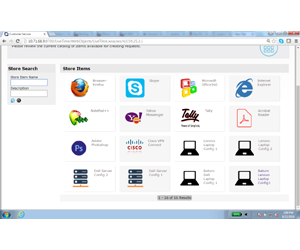As discussed in Unified Endpoint Management Starts Now! Unified Endpoint Management (UEM) is the ability to manage the full lifecycle of all types of enterprise devices including:
- Desktops and laptops
- Smartphones, tablets, and Chromebooks
- Existing ruggedised, handheld, and emerging IoT devices
While many consider this lifecycle management to be the ultimate goal of Unified Endpoint Management, this definition misses an important facet of the broader UEM story - the users who represent the ultimate endpoint. People carry multiple devices, from laptops to tablets to smartphones. IT, in addition to effectively managing and delivering enterprise resources, must ensure that they satisfy their users across this wide range of devices.
 User satisfaction can be earned in two ways: by using an anticipatory model or by using an on-demand model.
User satisfaction can be earned in two ways: by using an anticipatory model or by using an on-demand model.
The anticipatory model provides an experience which tries to anticipate the user’s every need and deliver on these needs at the right time and at the right place. This model is difficult to support and sustain because it requires resources to be reserved beforehand and requires a high level of redundancy in licenses and other costs.
The on-demand model lets the user request resources as needed through a self-service interface, enabling the user to be provisioned with resources quickly and easily. This model is more sustainable and extensible than the anticipatory model, but requires you to effectively unify multiple competing aspects--management, security, and user satisfaction.
A good self-service experience for users leads to both an increased move towards self-service and an increased satisfaction in the delivery of enterprise IT resources. The enterprise experience becomes similar to a consumer on-demand model in which a customer enjoys the initial purchasing experience with an online shopping site and returns for additional purchases on that site.
The strategic vision for ZENworks is to become an easy-to-use Unified Endpoint Management solution with strong self-service and application management capabilities, provided in an identity-centric, location-aware fashion.
At Micro Focus we believe that there are a number of key aspects that a UEM self-service solution must address in order to increase user productivity and decrease the IT time and effort required to serve enterprise resources to users:
- Availability: The self-service tool should be available from any device at any time and from any location.
- Adaptability: The self-service tool should give the user access to all entitled resources. In addition, it should let the user know which resources he/she is not entitled to (assuming the business wants the user to know) so that the user can request entitlement (for example, role, org unit, and dynamic group based access to resources).
- Centrality: The self-service tool should provide the user with access to the resources he/she might need from a single place.
- Ease of Learning: The self-service interface should be simple and intuitive so that the user does not need much time to learn how to use it.
- Ease of use: The self-service interface should provide functionality (auto fill, context data, etc.) that enables the user to quickly make resource requests.
- Secure Access: The self-service tool should enable the user to authenticate through multiple mechanisms across the resources the user owns and, once authenticated, the user should not be made to authenticate multiple times unless required.
As part of ongoing and upcoming releases, we will focus on providing full spectrum self-service to users:
- The user can view all of his/her data and act on the data in a single place.
- This single place is accessible across multiple devices that the user owns.
- Using any of those devices, the user can request help for enterprise resources on any other devices.
- This single place allows the user to add any new personal or corporate-assigned devices.
On the back-end, the self-service paradigm should achieve the following goals:
Enable users by automating some aspects of enterprise resource access and installation.Enable better service by knowing the user’s data and use that data to provide a satisfactory solution.
Surface the data to the technician when it’s unable to solve the problem on its own through automation framework intelligence.
In the rest of this article, we look at three specific ways that near term ZENworks and Micro Focus Service Desk releases enable self-service in a Unified Endpoint Management world: the Micro Focus Service Desk User Portal and the new ZENworks 2017 User Application and User Portal.
Micro Focus Service Desk 7.3 User Portal with New Store
Micro Focus Service Desk 7.3, expected late this year, will introduce a new Store user portal (figure 1). With the Store user portal, the user can begin his journey towards self-service. The Store provides an icon-based request service for the user to request items from the Service Desk. The items can range from software to hardware to abstract requests.
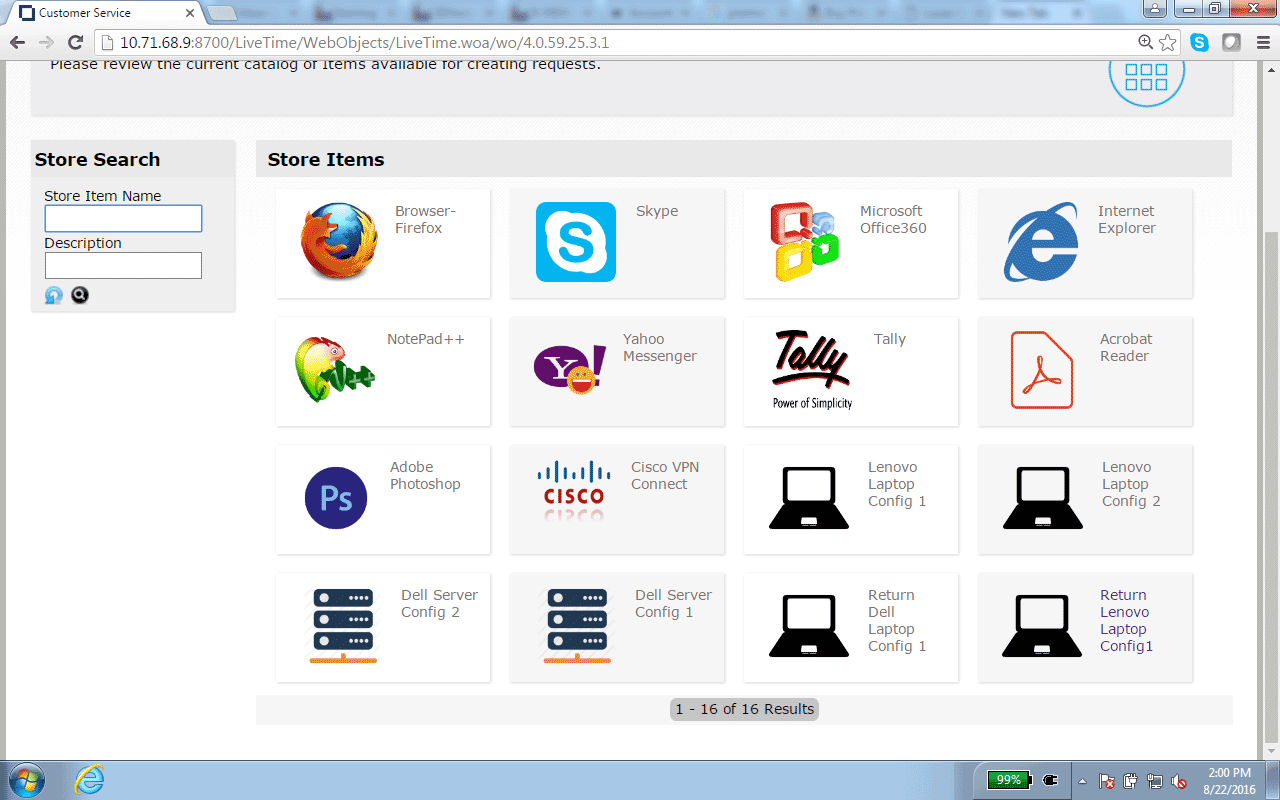
Here are some key points about the Store:
- Software self-service is automated using “Store Extensions” which allow you to plug in to ZENworks or any similar software. This allows for faster self-service without technician interaction, resulting in higher user satisfaction.
- For hardware requests, we will provide the ability for the technician to assign items to the user (so that the user now owns the item). This is intended to provide basic asset management capabilities for non-managed items.
- Therefore, the complete item lifecycle can be followed by organisations without needing to rely on multiple applications.
- There is also the option to raise a purchase request in case a requested item is not available.
- Going forward, the Store will integrate with Volume Purchase Programs (VPP) and other license management tools for software asset management. This means that the admin can control assignment as well as visibility of requests when the asset count goes below a certain threshold.
Figures 1 and 2 show how easy it is for users to request software and hardware using the Service Desk user portal, and to generally participate in the employee lifecycle.
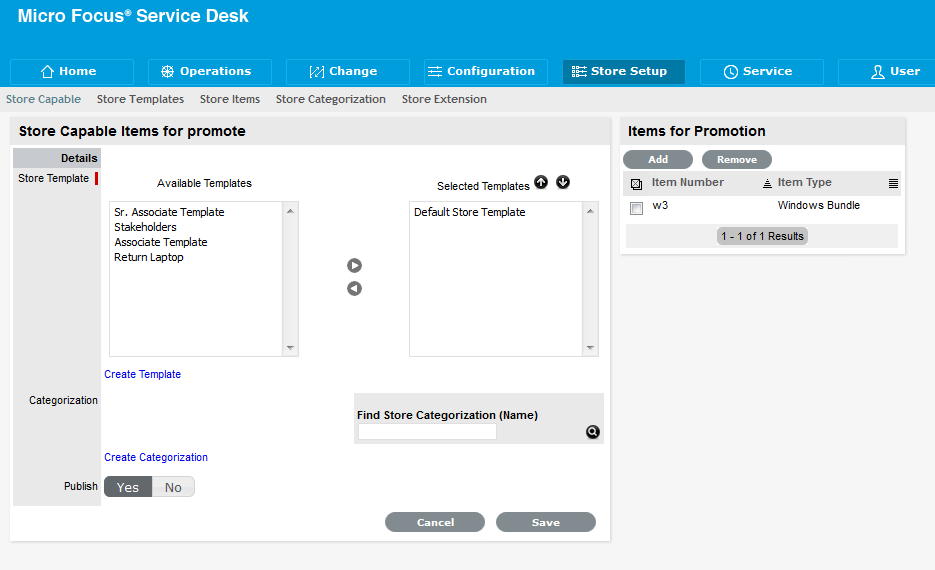
The admin can control visibility of items at the organisational unit or at an individual user level. There is also a hierarchical way of allocating workflows, SLAs, and priorities for the user. With this powerful new feature, users can now:
- Request applications: A user can request an application install – for example, “Adobe Activate”. This application is a licensed application which may or may not require approval based on the user’s designation (as set by the administrator). If the user requests this application and has rights for a non-approval based install, the user will see a seamless install through built-in store extensions. Even if an approval is required, the instant the request is approved the user will still get an automated install on his device. This means the user doesn’t have to wait for a super-busy technician to get the request fulfilled.
- Request hardware / abstract requests – A user can request items be assigned to him. After the user is assigned ownership, the item appears in his list of ownership/responsibility. Even the user’s non-managed assets like company car, company SIM card can appear in the list. The user can print out this list every year, sign it, and submit it for audit purposes. Assigned items can also have a “return item” request that will be initiated upon the user leaving the organisation.
The ZENworks 2017 User Application and User Portal
ZENworks 2017 introduces two new self-service components: the ZENworks User App and the ZENworks User Portal (figure 3).
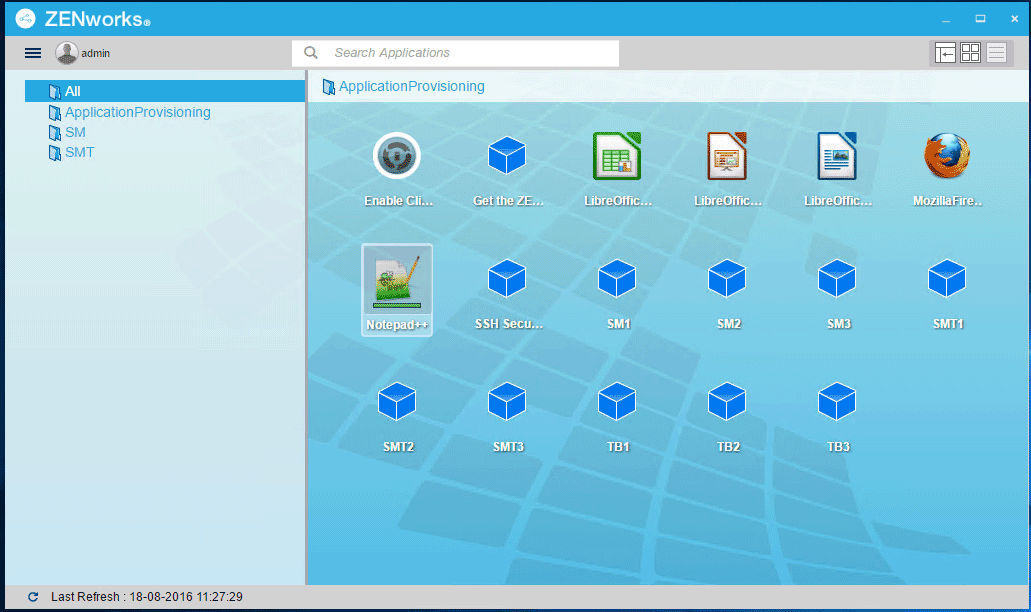
With the ZENworks User Application (ZAPP), we have extracted all the functionality of the old Novell Application Launcher (NAL) Window into a new 21st century experience. But we’ve also included much more, as the ZENworks User Application is one of the first applications to utilise the full strength of the Unified Endpoint Management philosophy. With the ZENworks 2017 release, we will introduce:
- An integrated search to help users get to the app of their choice. The search includes full and split pattern matching by name, description, and more. Also included will be the ability to search by status.
- A new branding policy (figure 4) that allows organisations to make the ZENworks User Application appear as a service provided by them, not by Micro Focus. This includes the ZAPP icon, wallpaper, and colour.
- Enhancements to configurations of ZAPP through ZENworks policy.
- An improved user experience, including:
1. Triggering remote assistance for end-user help from the ZAPP window.
2. Common phraseology instead of technical terms.
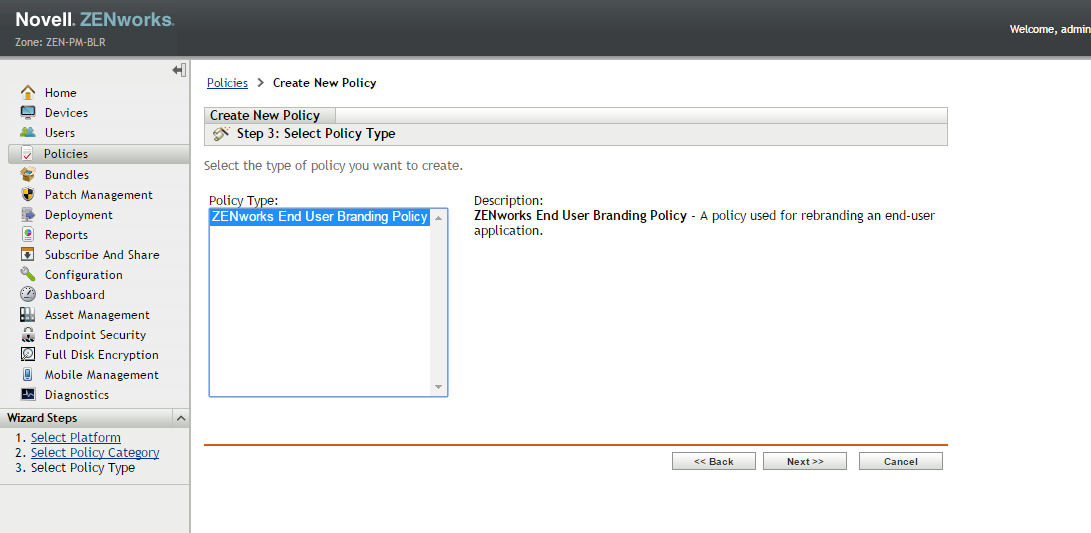
As in previous releases, the administrator can provision the new ZAPP to function as an application or as the shell itself. When using ZAPP, users can:
- See progress for bundles both individually and in detail by clicking on the progress view bar. Once the admin finishes provisioning bundles, the user can use the integrated search bar to find desired applications. The search can include names or descriptions with full or partial text, and the user can see the results change based on what is typed.
- Request remote assistance from the settings page itself. The user does not need to go to the ZENworks system tray icon, but can click the menu from ZAPP itself to request remote assistance.
- In shell mode, have the same ability provided by the ZAPP application to view progress and launch applications. In addition, the user can shut down or reboot the system from the ZAPP shell.
The initial release of the second self-service piece, the ZENworks 2017 User Portal, brings pure mobile management functionality to users. including enabling users to enrol mobile devices with ZENworks by using a mobile application or the web portal. After enrolling a device, a user can view the device status from the web portal and initiate a manual refresh if needed.
The ZENworks 2017 User Portal interface uses the Anjular.js framework which gives it very good rendering flexibility across any device the user uses.
Where Are We Going From Here?
These new user interfaces, being introduced in ZENworks 2017 and Micro Focus Service Desk 7.3, are just the beginning of a journey towards a combined end-user experience that we expect to bring to the ZENworks Unified Endpoint Management solution over the next several releases.
Single Point for User Self-Service Activity
The long term goal of the ZENworks User Application and ZENworks User Portal is to consolidate all enterprise user related activity into a single point and allow interactions between the user data. For example, a user should be able to do all of the below through a single interface on any device:
- View alerts and outages
- Enrol new devices, either personal or corporate assigned
- View and manage tickets
- Request new items of interest
- Return old items / old devices
- View all owned items and sign off on an audit checklist
Launch applications on a device of choice FROM any device the user is logged in to
Multiple Help Options
The ZENworks User Application, along with the User Portal, are intended to increase the push towards self-service. In addition to a highly responsive user interface, later releases of ZAPP will come with the ability to log tickets from inside the application window and to chat, call, or otherwise contact a technician for any help with requests.
Context-Aware Automation
In our move towards automation which aids users and technicians, one of the most important things we are designing into the new ZENworks is the concept of context. Some examples of context include:
- In the case of a user, context includes the user’s name, designation, and workplace at current time.
- In the case of the machine that the user is working on, context could be IP address, memory, CPU parameters, and so forth.
- In the case of an application, context can be the application name and the environment around it during execution.
This context, when embedded into a ticket, allows for automation to be applied based on this contextual data. This helps self-service take on a whole new paradigm. Capturing of the context makes for a very powerful Unified Endpoint Management analysis and automation framework – policy driven with enough intelligence to make decisions based on the available data.
Later releases of the ZENworks User Portal will see the automation aspect enhanced to a higher level. Users can initiate requests which work directly at the device level itself – for example, to lock or wipe a device, to enroll devices automatically, to launch applications, and to log tickets on devices, applications, and so forth.
In the ZENworks User Application, later releases will allow a user to select a faulty application and “log a ticket.” The resulting automated sequence of steps could first trigger a repair of the application. If successful, the application simply continues and no ticket is logged. If not, ZAPP may suggest a solution taken from the knowledgebase or open a call on behalf of the user if no suggestions are available. With the power of the ZENworks and Service Desk solutions the overall workflow could have several layers, starting with the Application environment and continuing up to network/device restart, based on the context parameters and policy defined by the admin.
Ultimately the goal of weaving self-service into our Micro Focus Unified Endpoint Management solution is to provide an experience that not only allows you to support your users, but delight them as well. We hope you’ll come with us on this journey and help us ensure we meet and exceed the needs of you and your users.
This article was first published in OHM35, 2016/4, p9-12

